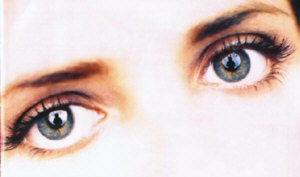More Children's Vision Issues
|
||||||||||||||
| Printer Friendly Story View |

Visual efficiency involves how well the eyes and visual system work together to gain information about the world around us.
As we discussed last week, children can have legitimate visual issues and still read the 20/20 line clearly. This week's column will be somewhat shorter, but will address the next level in the hierarchy of visual functioning - past healthy eyes and clear vision.
Visual efficiency involves how well the eyes and visual system work together to gain information about the world around us. The following is a summary of skills that are important:
Fixation and tracking are very important in our ability to read efficiently and process information effectively, as studies of reading eye movements have shown that smooth, efficient reading is really made up of several distinct "hops and stops" - but not necessarily on each individual word.
Focusing in front of the target expends too much energy, and focusing too far behind the target can similarly lead to eyestrain and blur.
Why are these issues more pertinent to school-age children? Several answers. The most logical is that by adulthood any such problems would hopefully have been ferreted out and treated. Also keep in mind that school age children use their eyes more intensely than they ever have up to that time.
What's the take home message here? Have your child's eyes examined early and regularly. Children don't know if there's a problem because they don't know a standard of normal against which to compare.
Also, I hope you now have a sense for some of the measurements that need to be evaluated in a thorough children's eye examination that aren't addressed in a screening. As we always say, there's more to it than 20/20.
Some say vision is life's most precious gift, so make sure your child does not have any unnecessary barriers to seeing clearly and learning effectively!
I invite your comments and feedback. Dr. Lee Newton
| Printer Friendly Story View |

|
Prior Article
March 5, 2025 by: Stephen Kent St. Patricks Parade 2025 - IT's TIME |

|
Next Article
February 10, 2020 by: Rachel Reh Family Winter Fun Fest is BACC Hot Spot for 2/10/2020 |
|
|

Dr. Lee Newton, Eye Care |
|
|
|
Printer-Friendly Story View
0200 Nd: 04-28-2025 d 4 cpr 0
12/31/2020 P3v3-0200-Ad.cfm
SPONSORED LINKS
12/31/2020 drop ads P3v3-0200-Ad.cfm
